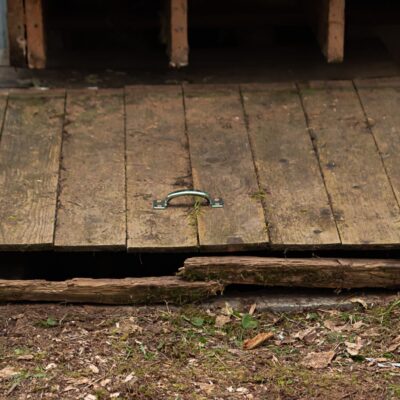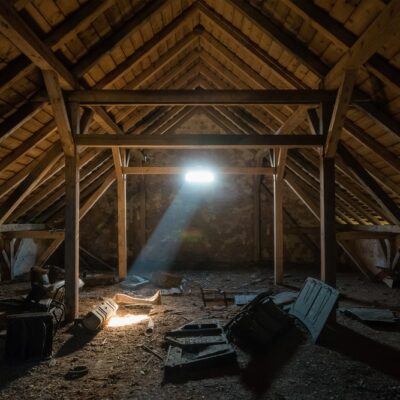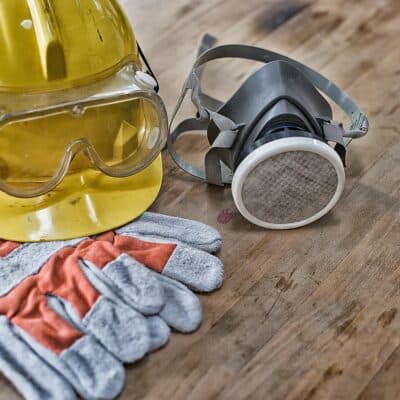Electrical exposures: What home inspectors need to know
Last Updated November 14, 2023
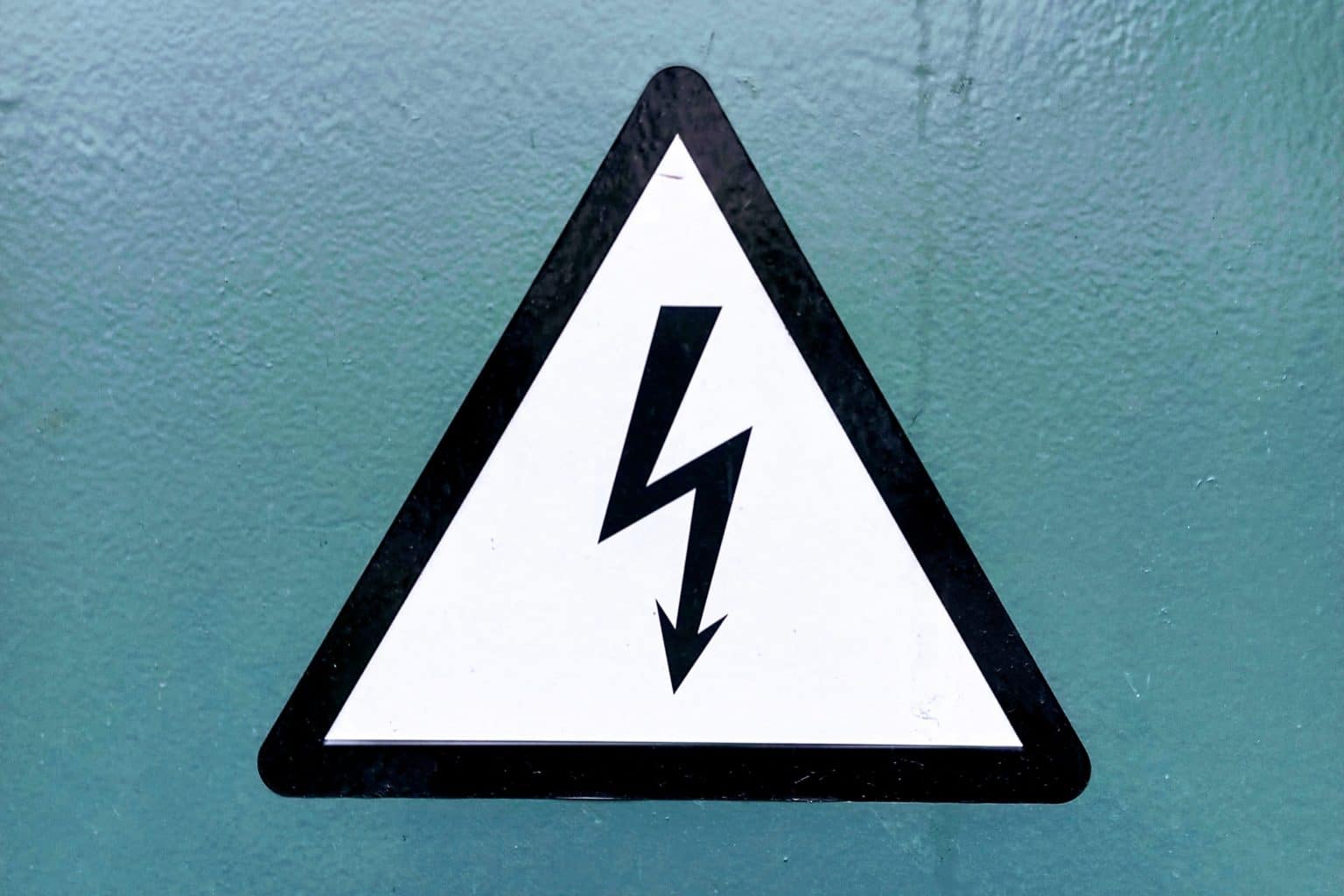
While inspecting the outside of a house a couple years ago, Joe Mazza of Exclusive Home Inspection in New York encountered a metal grating, like a louver, that went into the crawlspace under the property. According to Mazza, the grating was installed incorrectly. It wasn’t screwed in, so it was just sort of hanging there. A wire and plug were protruding out of the grating. The plug appeared to be for a generator. Someone had wired it into a 30-amp breaker, but there was no interlocking kit. Both the breaker and the panel were on.
Wanting to move the metal grating aside, Mazza reached out and touched it. He slid the grating over with his palms against the concrete siding of the house.
“[The grating] touched the plug. Sparks flew. Flames shot up. [The electricity] hit my arm [and] shot me back about five feet,” Mazza said. “[I] saw stars [and was] shaking like crazy.”
Mazza hadn’t realized that the wire was live. Had he known—or been more cautious—he would have tested the line before touching the metal grating.
“It was a huge wake-up call for me. If I [had been] grabbing that metal grating, I would have died. If my face [had been] against it, it would have burnt my face,” Mazza said. “That night, I came home, I laid in bed, [and] I didn’t sleep the entire night. I literally sat there, and I stared at my six-year-old-daughter, and [I] was just thankful that I was able to do that.”
Electrical exposures and home inspectors.
Inspecting homes is a dangerous job. From slippery roofs to aggressive animals, rotted subflooring to invisible toxins, the average home inspector encounters countless perils during their careers. One hazard that can be fatal is electrical exposures.
 “[Electrical exposures] can take your life if you’re not prepared,” said Walter L. Williams of PPT Inspections in Michigan. “Even if you put an instrument to [a wire] to get a reading, or to see if it’s energized, you don’t know what may be lurking behind the [electrical] box.”
“[Electrical exposures] can take your life if you’re not prepared,” said Walter L. Williams of PPT Inspections in Michigan. “Even if you put an instrument to [a wire] to get a reading, or to see if it’s energized, you don’t know what may be lurking behind the [electrical] box.”
To Williams’ point, one reason electrical exposures pose such a risk is because of how difficult they are to identify.
“You can’t see electricity. You can’t smell it, [and] you can’t taste it. But you feel it, and it hurts really bad,” said Julian Cofer of Cofer Real Estate Inspections in Texas.
Injury types.
According to the Canadian Centre for Occupational Health and Safety (CCOHS), electrical currents cause four main types of injuries:
- Electrocution
- Electric shock
- Burns
- Falls
Each of these four injury types can happen to a home inspector. Here are some examples of scenarios in which you could encounter a hot or live wire and sustain an injury:
- To get to the electrical panel, a home inspector leans across a washing machine. Conductive to electricity, the metal and improperly grounded machine transfers a shock to the inspector.
- While in an attic, a home inspector brushes against a live wire hidden in the insulation.
- The inspector steps through a puddle of water in the basement. As he continues to inspect, he encounters some energized wires that electrocute him.
- While inspecting the electrical panel, an inspector touches an energized circuit part. The shock burns his hand and sends him flying backward several feet.
Thankfully, suffering from an electrical injury on the job is avoidable. There are ways for you to manage your risk against harm. In this article, we discuss some precautions and resources to overcome electrical exposures you may encounter on the job.
How can you avoid electrical injuries?
Know what you’re looking for.
Understanding the conditions of the wiring system can help you stay safe during your inspection. Start by taking a thorough electrical inspection course, like those offered by local or national associations or by training schools.
 While it’s not always possible to know the history of the electrical system prior to your inspection, making a habit of asking beforehand gives sellers the opportunity to alert you of potential electrical hazards. Also, knowing the year the home was built can help you predict what electrical issues you may encounter. (For example, a house built in the 1930s may have knob-and-tube wiring while a new build will not. You can learn more about avoiding knob-and-tube and other common electrical claims here.)
While it’s not always possible to know the history of the electrical system prior to your inspection, making a habit of asking beforehand gives sellers the opportunity to alert you of potential electrical hazards. Also, knowing the year the home was built can help you predict what electrical issues you may encounter. (For example, a house built in the 1930s may have knob-and-tube wiring while a new build will not. You can learn more about avoiding knob-and-tube and other common electrical claims here.)
In addition to understanding electrical inspection basics, it’s good to know the warning signs that may indicate that an electrical system is dangerous. The InterNACHI online education course “How to Perform Residential Electrical Inspections” lists several.
There are warning signs that a panel, box, or the system in general may be compromised, and these should persuade the inspector to defer further evaluation to a licensed electrical contractor:
- scorch marks on the dead front or the panelboard door, indicating a past or recent arc flash;
- rust, which indicates past or recent moisture intrusion;
- missing or open breakers that cannot be confirmed to be de-energized;
- overloading of the circuits with DIY wiring;
- uninsulated wiring;
- excessive dust, dirt and debris inside the panelboard; and/or
- any signs of water inside, around or below the panelboard, which can lead to shock or electrocution.
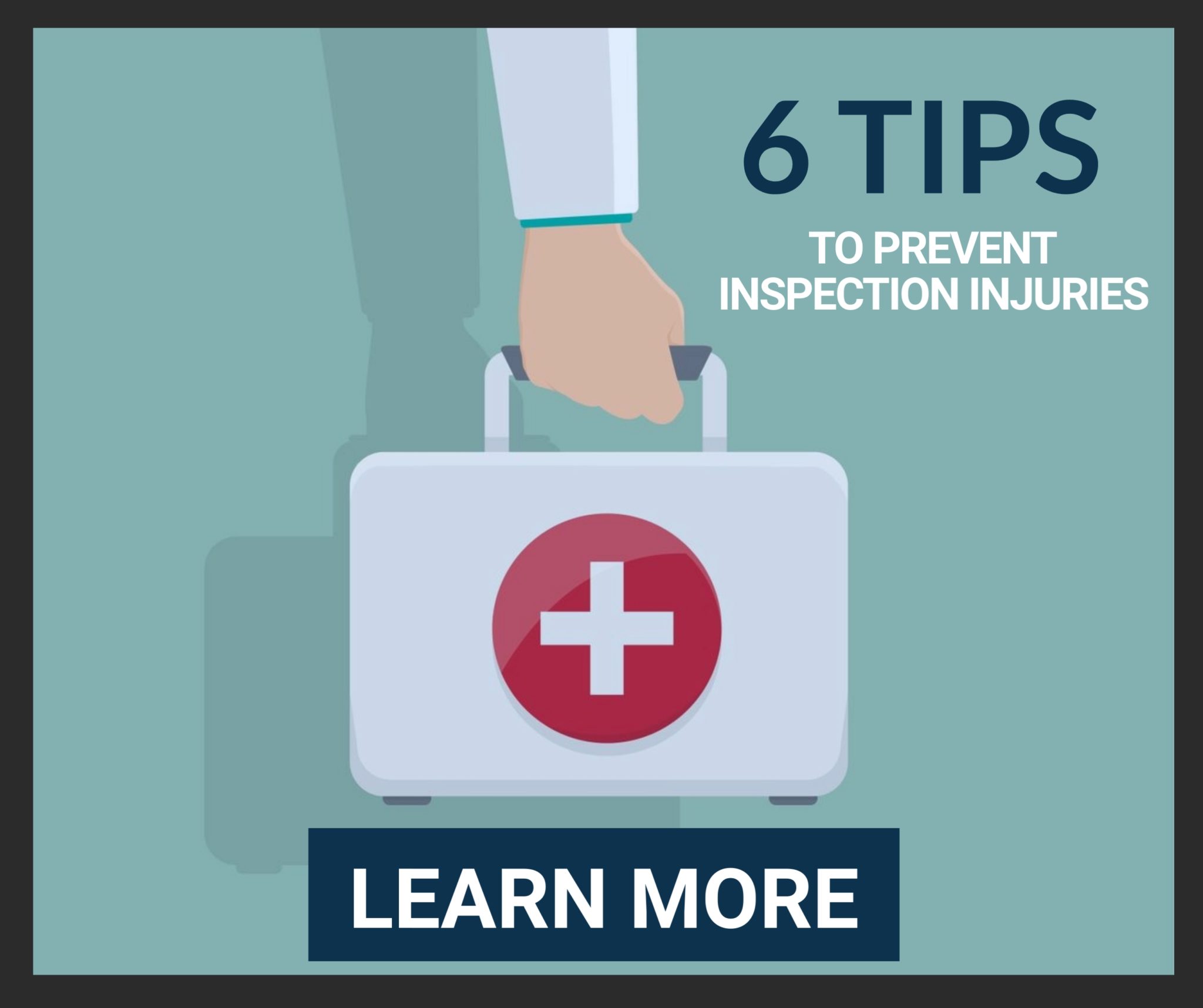 Dress appropriately.
Dress appropriately.
How you dress can provide you with literal layers of protection against electrical exposures. Many of the inspectors we interviewed wear insulated gloves, eye protection, and/or rubber-soled shoes to protect against electrical currents. Some of them know inspectors who even wear face shields and are considering starting to wear them themselves.
“If you look at the OSHA rules, when you’re messing with panels, you’re actually supposed to have a face shield on,” said Alan Grubb of 4U Home, Inc. in Maryland. “We haven’t required face shields ourselves yet, although I’m very well thinking about it. The more I read up on [electrical hazards], the more they scare me.”
While not discussed in the interviews, its’ worth mentioning that electricians avoid wearing jewelry—such as rings and watches—and carry insulated tools during the job. As indicated earlier, metal can exacerbate electrical hazards. Thus, avoiding wearing and carrying unnecessary metal materials is a great way to manage your risk.
Don’t become complacent.
When Mazza was shocked during his inspection, he had a voltage tester on him. He could have used it to verify that the wiring wasn’t energized. But he didn’t. According to Mazza, the routine nature of his home inspections had led him to be complacent, which put him in a dangerous situation.
Williams agrees that focusing on the task at hand is a big part of managing your risk.
“Most things happen when our mind is not set on the inspection,” Williams said. “If we’re not mentally checked-in on the inspection, we do short cuts, and bad things can happen.”
Bad things do happen, like Mazza’s shock or even an electrically induced fall. In his article “Understanding Non-Contact Voltage Testers,” Brad Deal of 20/20 Home Inspections in California describes how a non-fatal shock could prove deadly when an inspector isn’t aware of his environment. Learn how to avoid other inspection injuries in this free guide.
“There is a natural tendency to suddenly withdraw from a shock. The quick withdrawal of a hand can cause you to impale yourself on nearby metal edges, or if you are on a ladder, then the momentum could cause you to pull the ladder over the center of balance and fall,” Deal wrote. “You always must be cognizant of your surroundings and the potential repercussions of a shock. Was it the shock or the fall that killed him?”
When you use them, make sure to use ladders and pole cameras made of non-conductive (not metal) materials, like wood, fiberglass, or carbon fiber. According to Jim Troth of Habitation Investigation in Ohio, even having an aluminum tip on your ladder or pole cam may result in an injury. Additionally, you can also set up equipment away from electrical power lines and other sources of electrical exposure.
 Watch out for water.
Watch out for water.
Being aware of your surroundings doesn’t end with being cognizant of metal. Water, too, greatly increases the danger of an electrical inspection.
According to the U.S. Geological Survey (USGS), water’s ions and impurities make it a powerful conductor of electricity. That means that water anywhere near anything electrical can pose a significant hazard. As such, it’s important not to go near a panel with water around it.
“If there’s water dripping on the panel, don’t touch it. If there’s water on the floor underneath the panel, don’t touch the panel. Don’t even consider opening it up,” Troth said.
Additionally, water in attics and crawlspaces can pose a risk. Recently, former electrician Ryan Schmidt of Broadneck Home Inspections, LLC in Maryland encountered a crawlspace full of standing water about four inches deep.
“I just didn’t go into the crawlspace because you just don’t know if there’s a wire lying in the water somewhere,” Schmidt said. “I just make a notation, take pictures of it [to] show that that’s the current condition, and then I call it out in the report as being unsafe to enter.”
William Chandler of Property360, LLC in Florida, too, won’t enter a crawlspace with water in it due to the chance of encountering a hidden electrical exposure.
“We can’t always see if there’s electric wire. We find live wires buried in insulation and underneath a little bit of dirt,” Chandler said.
Always test.
Remember Mazza’s voltage tester? Because electrical exposure hazards aren’t always immediately apparent, you should test to ensure that the systems and components are safe before you inspect them.
Whether an electrical system is old or new, whether the seller says they’ve turned off the electrical or not, Tim Woodcock of First Choice Property Inspections, LLC in Florida cautions home inspectors not to make assumptions about wiring conditions. Rather, he suggests always treating the electrical system as if it’s energized.
“Even though you are told that [the wiring is] all dead and [the sellers] just haven’t removed it, you treat it as alive,” Woodcock said. “I’ve seen that knob-and-tube writing up in some of these older Florida homes, and I’ll put the [voltage] meter on it. That thing will light up—even though it was supposed to be disconnected.”
To verify whether something’s energized, most of the home inspectors we interviewed, including Mazza and Woodcock, recommend using a non-contact electrical tester—also referred to as a voltage proximity tester, voltage sniffer, glow-tip, and TIC tracer, among other names. While such testers are somewhat proficient in diagnosing electrical issues, the inspectors we interviewed recommended using testers primarily as a safety device.
Safety capabilities.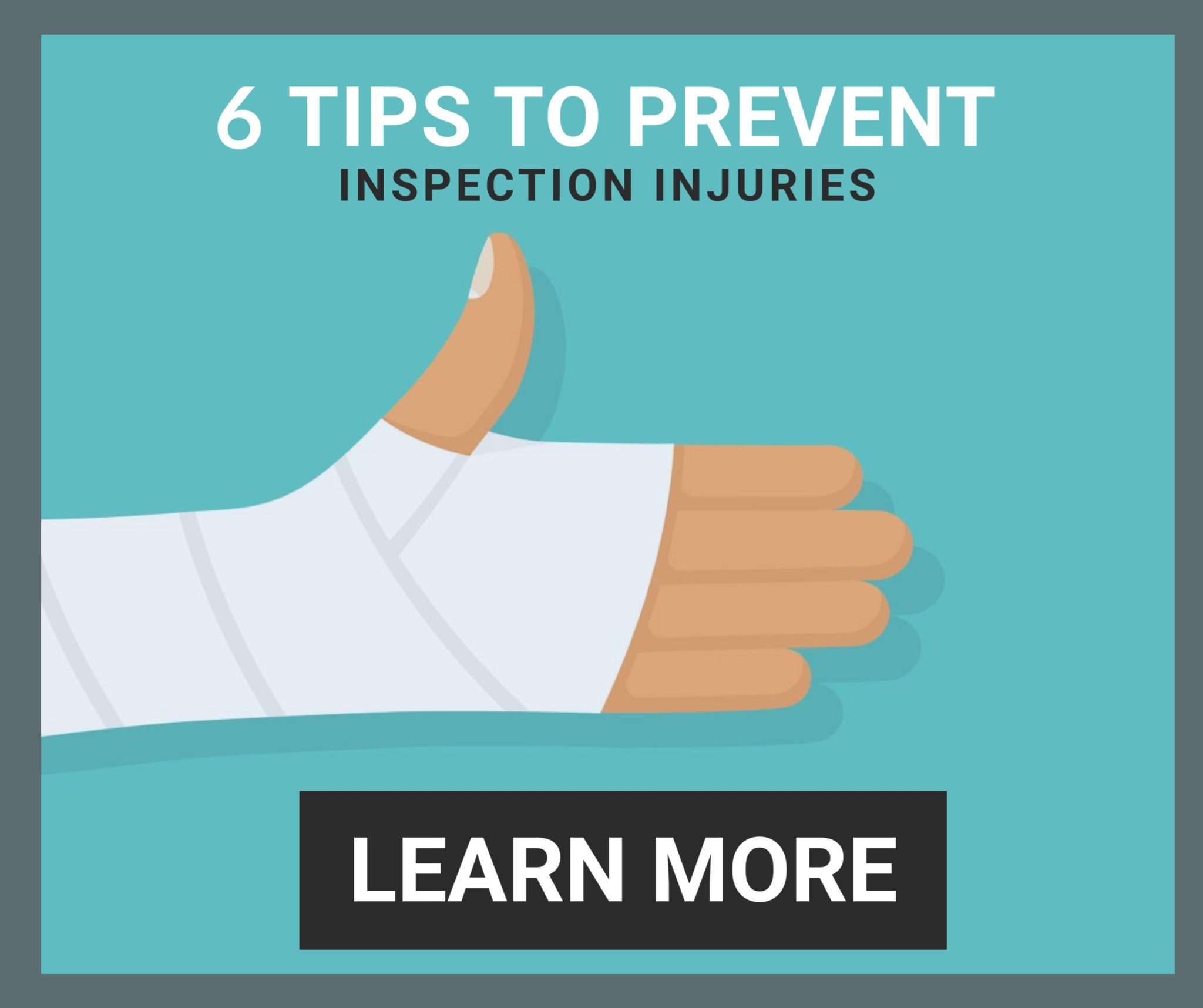
Here are some examples of what a non-contact tester can do to help keep you safe:
- Check if wires are live
- Identity energized circuits
- Locate missing or discontinuous grounds
- Find wires hidden behind walls, underground, or inside electrical boxes
- Discover metallic fixtures underground
- Identify blown fuses
- Locate neutrals, ground faults, or high voltage lines
- Check a circuit for completeness
Note that, in addition to having diagnostic limitations, non-contact voltage testers have safety limitations, too. Every tester is subject to false positive and false negative readings, which vary based on the tester you use. To determine your tester’s limitations, consult your tester’s user manual.
Don’t have a non-contact voltage tester yet? You can purchase one from a hardware store or an online retailer for around $30.
Consider using a thermal imaging camera.
Both Schmidt and Williams use thermal imaging cameras to identify electrical hot spots in the connections, circuit breaker, or fuses. Schmidt estimates that one in every 30 houses he inspects has an electrical overload issue.
If the camera does identify an issue, Williams suggests communicating the potential defect to the client.
“If there’s [an] unusual reading from the infrared camera, I just put a note in my inspection report that it should be inspected by an electrician,” Williams said.
Infrared cameras do have their limitations. In his article “Testing Electrical Systems” for the ASHI Reporter, Mike Twitty of Homescan Property Inspections in Tennessee explained that thermal readings are not conclusive and must be verified.
“A thermal camera can indicate a suspected overloaded circuit but only can be confirmed by following up with an amp reading on the loaded circuit,” Twitty wrote.
Interested in learning more about thermal imaging? Read our article “Infrared Cameras: Redefining the visual, non-invasive home inspection.”
 Be wary of the electrical panel.
Be wary of the electrical panel.
Many of the techniques you can implement to manage your risk against electrical exposures apply to a wide variety of circumstances. However, electrical panel safety warrants a section all its own.
“One of the most dangerous parts of the inspection is opening up the electrical panel,” Schmidt said.
In his article “Electrical Service Panels,” InterNACHI founder Nick Gromicko suggests that home inspectors ask themselves four questions prior to touching an electrical panel:
- Do I have an escape path? Make sure that you know where you can safely turn or step if you must safely escape a dangerous surprise, such as bees or sparks. An unfortunately placed shovel or extension cord, for instance, can turn a quick jerk into a dangerous fall.
- Are the floors wet? Never touch any electrical equipment while standing on a wet surface!
- Does the panel appear to be wet? Check overhead for dripping water that has condensed on a cold-water pipe. Moisture can arrive in more ways than you can imagine.
- Is the panel rusty? Rust is an indication of previous wet conditions that may still exist.
Once the panel is open, you should refrain from touching the components of the panel—even to move conductors aside or to read labels. Touching energized electrical components can lead to electrical injuries. Rather than reaching into the panel, InterNACHI suggests explaining that you were unable to safely retrieve whatever information you’re lacking in your inspection report.
Panel Screw Hazards.
In its course “Safe Practices for the Home Inspector,” InterNACHI adds a caution against opening a panel that’s original screws have been replaced with improper substitutes.
“The risk of cutting through the insulation that protects the wire conductors may be greater with the threads along the shaft of the screw than with the point of the screw,” the course explains. “InterNACHI recommends that inspectors not attempt to remove improper screws but, instead, disclaim conditions inside any affected panels and recommend correction by a qualified electrical contractor.”
Even if the screws themselves are correct, inspectors still face risks removing and replacing them. Michael Spaargaren of First Choice Inspectors in Illinois recommends against using electric screwdrivers—particularly when replacing the cover panel. According to Spaargaren, you might screw through insulation, short a circuit, and blow the breaker.
Client Concerns.
Home inspectors aren’t the only ones at risk whiling inspecting the electrical panel. The electrical exposure here is a shock hazard for clients and homeowners, too.
“Sometimes, you’re taking panel covers off, and panels might be below the recommended height. And if they’ve got a small or inquisitive child, they could easily stick their hand in there,” Spaargaren said.
To circumvent potential dangers to clients and other observers, Schmidt added a section to his pre-inspection agreement. As part of Schmidt’s contract, clients agree to give him space while he’s inspecting the electrical panel. See the excerpt below:
Electrical Panel: Clients must stay back 10’ away from the electrical panel while inspector has the cover removed and is conducting the panel inspection.
Alternatively, Williams recommends creating some signage that cautions laypeople against approaching potentially dangerous systems or components—like the electrical panel—during the inspection.
If it’s too dangerous, skip it.
Whether you’re inspecting the electrical or any other system, it’s important to always put your safety first.
“If you’re unsure about something, don’t touch it. Get a professional. Even though most of us are licensed professional inspectors, we’re just generalists. If you’re unsure about something, just get the resident expert out there to take a look at it,” Cofer said.
Chandler reminds inspectors that it isn’t their job to find every issue with a property. Furthermore, choosing to report an area or component as inaccessible due to a safety concern is perfectly reasonable.
“The inspector has to be aware of what could hurt them and do a reasonable assessment,” Chandler said. “’Is this something I should be doing? Am I willing to risk my life for $400?’”
What resources are available to home inspectors who are injured by electrical exposures?
 If you or one of your home inspectors is injured by an electrical exposure on the job, workers’ compensation benefits may be available to you.
If you or one of your home inspectors is injured by an electrical exposure on the job, workers’ compensation benefits may be available to you.
Workers’ comp insurance provides employees who suffer from work-related injuries or diseases with access to medical and wage benefits. Unlike general liability (GL) insurance, which covers inspection-related bodily injury and property damage claims for non-employees, workers’ compensation looks out for you and the people who work for your company.
“One accident can not only hurt you and maybe put you out of business, but more importantly, that employee has to have a way of making a living getting his bills paid for it if it happens on the job,” Grubb said.
By covering job-related injury and illness costs, workers’ comp protects both employees and employers. Employees work under less financial risk knowing they have on-the-job protection. Additionally, employers limit their liability and deter litigation.
“If you have any employees, they need to have workman’s comp,” Grubb said. “The amount that it costs for workman’s comp is minor [compared] to what it could cost you or your employee if you didn’t have it.”
What expenses can workers’ comp cover?
In electrical exposure injury cases, workers’ comp coverage can assist inspectors in the following ways:
- Medical Bills. From doctor appointments to hospital visits, to medications and mobility aids, workers’ comp helps pay to treat employee illnesses and injuries. Workers’ comp can even help inspectors pay for their mileage when traveling to receive medical care.
- Lost Wages. Sometimes, electrical-related injuries and illnesses are bad enough that employees are unable to work. Workers’ comp can pay a percentage of the money the employee would be earning if they weren’t in recovery.
- Rehabilitation. Workers’ comp policies may offer medical rehab benefits, like physical therapy, to help employees recover. They can also help pay for vocational rehab for severely injured employees unable to perform their previous jobs. By helping these injured employees attain new abilities, vocational rehab helps them return to work in a different role.
- Death. If an employee died, the employer’s workers’ comp insurance may help cover funeral costs and lost income.
Note that, since states regulate workers’ comp coverage, the amounts insurers will pay for the above benefits varies from state to state.
“Each state has its own regulations as to the amount and duration of lost income benefits and medical or rehabilitation services,” said Brianne Smith, InspectorPro broker and workers’ comp specialist. “However, workers’ comp is a no-fault coverage nationwide. That means it will provide coverage no matter who was at fault.”
Protect your business and your employees with workers’ comp insurance.
Do your part to abide by state law and protect your employees and your business by carrying workers’ compensation insurance. And do so with a company prepared to meet the inspection industry’s unique coverage needs.
“Things happen when you go out and inspect. And if something goes wrong, you want to make sure that you are covered…. I don’t want to be the one who doesn’t have the proper insurance in case something goes wrong,” Williams said. “For a few dollars more, [workers’ comp] is going to give you peace of mind.”
Get a quote for workers’ comp for home inspectors today by completing our application. Or, you can learn more about workers’ comp by reading this long-form article on our blog.
To learn other ways to avoid harm, download the free guide “6 Tips to Prevent Inspection Injuries.”


